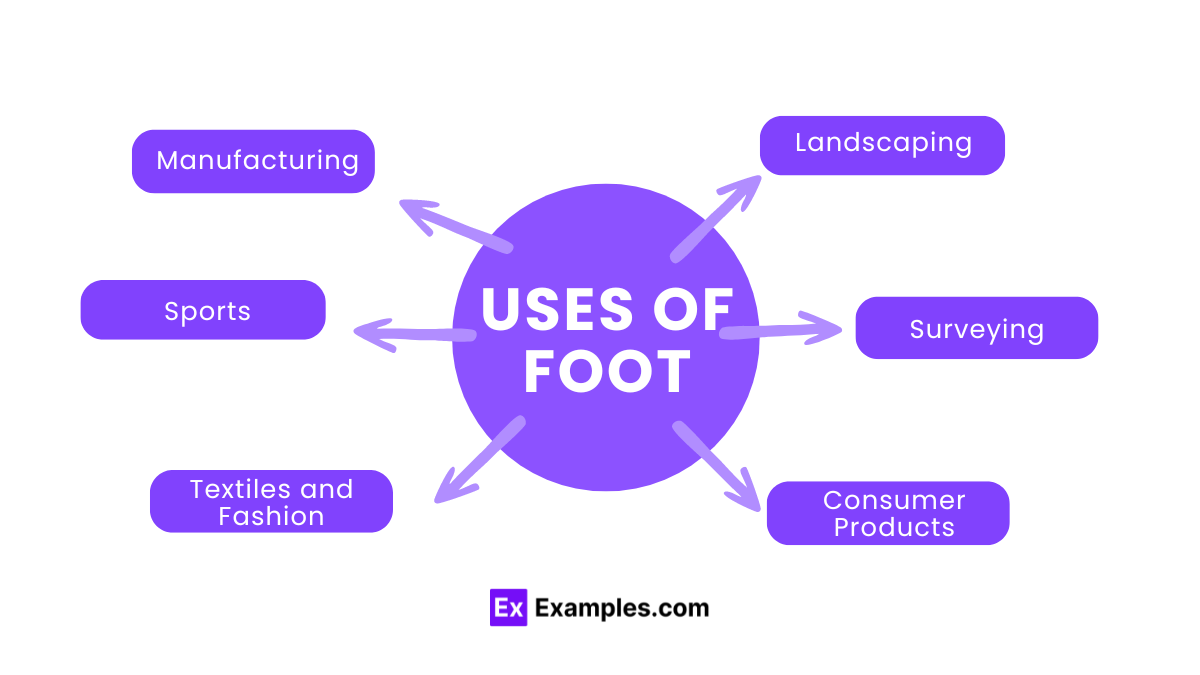What is the standard length of one foot in inches?
10 inches
11 inches
12 inches
13 inches


A foot is a unit of length in the imperial and US customary systems of measurement. It is defined as exactly 0.3048 meters. Traditionally, the foot is subdivided into 12 inches. The foot has been used in many different systems throughout history, but today it is primarily used in the United States for measuring heights, distances, and sizes.
It equals 12 inches or one-third of a yard. In metric terms, one foot is precisely 0.3048 meters. The foot is commonly employed for measuring short distances and heights, such as the height of individuals, the length of rooms, or the altitude of geographical features.
To measure distances in feet, several tools can be effectively used, ranging from simple household items to more specialized equipment. Here are some common tools for measuring a foot:

Here’s a table showing the conversion of feet to other common units of length:
| Length Unit | Conversion from Feet (ft) |
|---|---|
| Inches | 1 ft = 12 in |
| Yards | 1 ft = 0.3333 yd |
| Meters | 1 ft = 0.3048 m |
| Kilometers | 1 ft = 0.0003048 km |
| Miles | 1 ft = 0.00018939 mi |
| Centimeters | 1 ft = 30.48 cm |
| Millimeters | 1 ft = 304.8 mm |
| Micrometers | 1 ft = 304,800 µm |
| Nanometers | 1 ft = 304,800,000 nm |
Understanding how to convert feet to other units of length is crucial when dealing with different measurement systems, whether you’re measuring distances, comparing lengths, or needing accurate conversions for projects. Here’s a straightforward guide to converting feet to and from other common units of length:

The symbol for a foot is “ft.” It is used to represent the unit of length in the imperial and US customary systems, measuring 12 inches or 0.3048 meters.
You can write 5 feet 2 inches as “5′ 2″” using the apostrophe to denote feet and the quotation mark for inches. It is also written as 5 feet 2 inches.
Americans use feet because it is part of the customary system inherited from British colonial rule, and it has remained standard in the U.S. due to tradition and resistance to change.
Text prompt
Add Tone
10 Examples of Public speaking
20 Examples of Gas lighting
What is the standard length of one foot in inches?
10 inches
11 inches
12 inches
13 inches
If a table is 6 feet long, how many inches long is the table?
60 inches
66 inches
72 inches
78 inches
How many feet are there in 1 yard?
2 feet
3 feet
4 feet
5 feet
If a person is 5 feet 9 inches tall, how tall is this person in inches?
65 inches
67 inches
69 inches
71 inches
A foot is equivalent to how many centimeters?
25.4 cm
30.48 cm
35.56 cm
40.64 cm
How many feet are there in a quarter mile? (1 mile = 5280 feet)
1120 feet
1200 feet
1320 feet
1420 feet
If a room measures 10 feet by 15 feet, what is the perimeter of the room?
25 feet
30 feet
40 feet
50 feet
A rope is 7 feet 8 inches long. How long is the rope in inches?
88 inches
90 inches
92 inches
94 inches
What is the area of a square field with a side length of 20 feet?
200 square feet
300 square feet
400 square feet
500 square feet
If a distance is 0.5 feet, how many inches is that?
6 inches
5 inches
4 inches
7 inches
Before you leave, take our quick quiz to enhance your learning!

